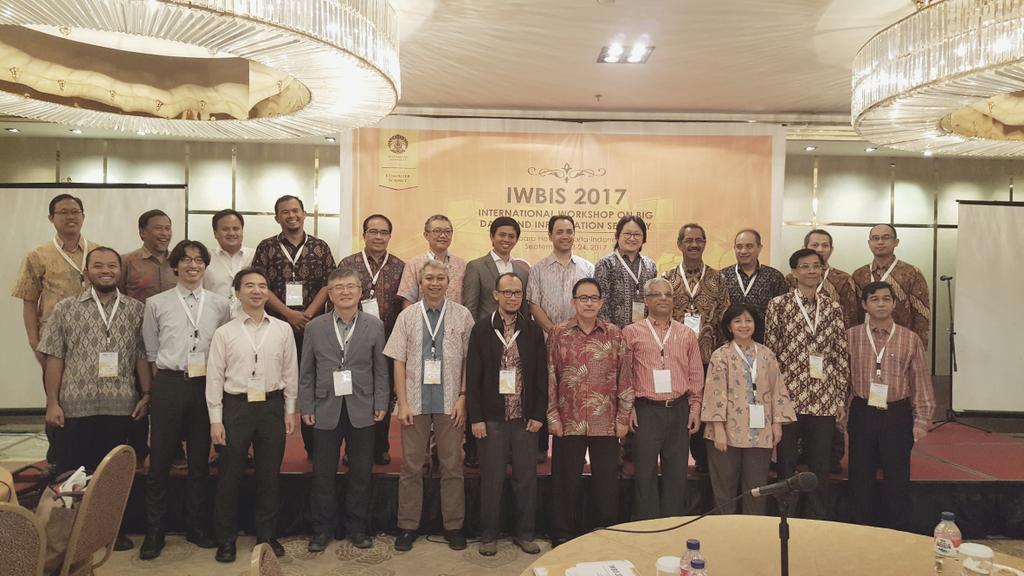鷲崎弘宜, 津田直彦, 本田澄, “IPA RISE委託研究 2015-16年度 測定評価と分析によるソフトウェア製品品質の実態定量化および総合的品質評価枠組みの確立(報告セミナー用)”, JISA Digital Masters Forum 2017, 東京, 2017年10月24日
鷲崎弘宜, 津田直彦, 本田澄, “IPA RISE委託研究 2015-16年度 測定評価と分析によるソフトウェア製品品質の実態定量化および総合的品質評価枠組みの確立(報告セミナー用)”, JISA Digital Masters Forum 2017, 東京, 2017年10月24日
Tian Xia, Hironori Washizaki, Takehisa Kato, Haruhiko Kaiya, Shinpei Ogata, Eduardo B. Fernandez, Hideyuki Kanuka, Masayuki Yoshino, Dan Yamamoto, Takao Okubo, Nobukazu Yoshioka and Atsuo Hazeyama, “Cloud Security and Privacy Metamodel: Metamodel for Security and Privacy Knowledge in Cloud Services,” 6th International Conference on Model-Driven Engineering and Software Development (MODELSWARD 2018), short paper, FUNCHAL, MADEIRA – Portugal 22 – 24 January, 2018.
Security and privacy are important in cloud services. Numerous security and privacy patterns as well as nonpattern-based knowledge such as practices and principles exist in cloud services. Selecting and combining the appropriate knowledge is difficult due to numerous options and the nature of the layered cloud stack. Herein we propose a metamodel called the Cloud Security and Privacy Metamodel (CSPM) to handle security and privacy in cloud service development and operations. CSPM can classify and support existing cloud security and privacy patterns and practices in a consistent and uniform manner. Moreover, we propose a security and privacy aware process to develop cloud system utilizing CSPM. Several case studies verify the effectiveness and usability of our approach. As a result, we confirmed effectiveness and usability of CSPM, as well as some possible future work.
鷲崎弘宜, 文部科学省 社会人教育プログラム enPiT-Pro「スマートエスイー」, 先端IT活用推進コンソーシアム(AITC)2017年10月18日(水) 『第八回総会』, 東京
Preliminary Call of SamurAI Coding 2017-18, 6th IPSJ International AI Programming Contest is out. Its World Final will be hosted by Waseda University on March 14 2018 collocated with 80th IPSJ National Convention.

Haruhiko Kaiya, Nobukazu Yoshioka, Hironori Washizaki, Takao Okubo, Atsuo Hazeyama, Shinpei Ogata and Takafumi Tanaka, “Eliciting requirements for improving users’ behavior using transparency,” Asia-Pacific Requirements Engineering Symposium (APRES), Melaka, Malaysia, 9-10 November 2017.
大久保雅司, 鷲崎弘宜, 早稲田大学ティーチングアワード総長賞(2016年度科目「システム開発プロジェクト基礎」における取組みに対して), 2018年2月
Ryosuke Ishizue, Kazunori Sakamoto, Hironori Washizaki, Yoshiaki Fukazawa, “PVC: Visualizing Memory Space on Web Browsers for C Novices,” 49th ACM Technical Symposium on Computer Science Education (SIGCSE 2018), full paper, February 21st – 24th, Baltimore, Maryland, USA (CORE Rank A)
Memory management in C languages is a challenging concept to grasp for novice programmers. Consequently, many researchers have proposed program visualization tools to alleviate these difficulties. For example, SeeC and PythonTutor (PT) are state-of-the-art tools for C languages. However, three problems hinder the use of these and other tools: capability (P1), installability (P2), and usability (P3). (P1) Tools do not fully support dynamic memory allocation or File Input / Output (I/O) and Standard Input. (P2) Novice programmers often find installation of SeeC challenging due to its dependence on Clang and difficulties setting up an offline environment that uses PT. (P3) Revisualization of modified source code in SeeC requires several steps. To alleviate these issues, we propose a new visualization tool called PlayVisualizerC (PVC). PVC, which is designed for novice C programmers, provides solutions (S1-3) to P1-3. S1 offers complete support for dynamic memory allocation, standard I/O, and file I/O. S2 is designed to be installed with a user’s web browser, and its server program can be initiated by executing a jar file. S3 reduces the steps required for revisualization. To evaluate this program, we conducted an experiment and questionnaire with 30 students. A set of four programming tasks are solved on average 1.7 times more quickly and with 19% more correct answers than those using a current state-of-the-art visualization tool.
Hironori Washizaki, “Security Patterns: Research Direction, Metamodel, Application and Verification”, Keynote, The 2017 International Workshop on Big Data & Information Security (IWBIS), Jakarta, Indonesia , Sep 23-24, 2017.
Photo taken by Asosiasi Cloud Computing Indonesia:

EdTechZine, “プログラミング教育に向けての産学官の課題が見えてきた――プログラミング教育明日会議”, 2017年9月12日